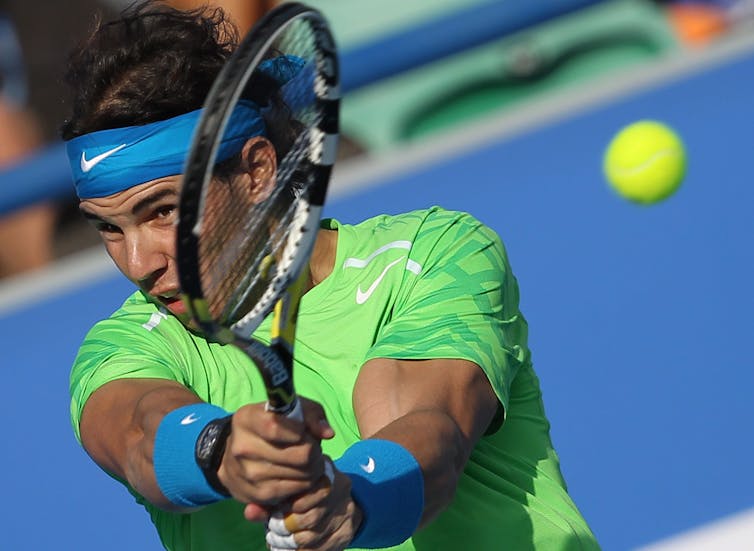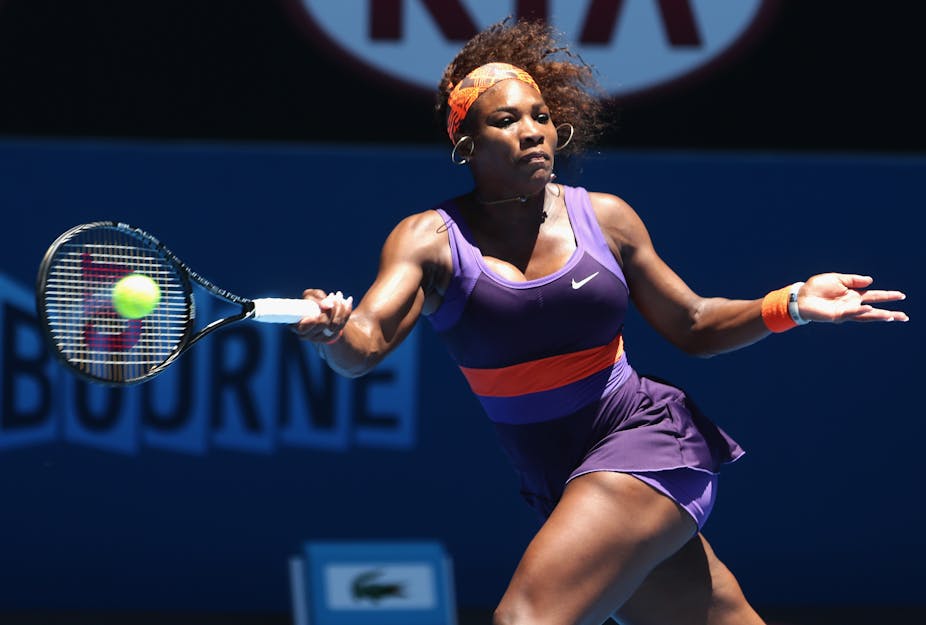Ever wondered how elite tennis players compare to their contemporaries in other sports?
Does Rafael Nadal have the same leg power as world 100m sprint champion Usain Bolt? Would Australian Sam Groth’s booming serve (he currently holds the record for the fastest ever serve, 263km/h) make him a good baseball pitcher? And would the sheer athleticism of the [Williams sisters](http://williamssisters.org/](http://williamssisters.org/) ensure a career in basketball, or any other sport, if it wasn’t tennis?
Unlike many sports regulated by a time clock, the duration of a tennis contest is unknown. On average a match lasts between one and four hours, though the longest professional tennis match was at Wimbledon in 2010 when [Nicolas Mahut and John Isner](http://www.guardian.co.uk/sport/2010/jun/25/john-isner-nicolas-mahut-wimbledon-2010](http://www.guardian.co.uk/sport/2010/jun/25/john-isner-nicolas-mahut-wimbledon-2010 ) took 11 hours and five minutes, over 183 games, to decide their battle.
This variation in match demands influences the physical profiles of the players and consequently their strengths and weaknesses compared to other athletes.
Aerobic endurance
The gold standard technique of assessing a person’s aerobic fitness is to measure their maximal oxygen uptake (VO2 max). This measures the respiratory and cardiovascular systems’ ability to deliver oxygen to the working muscles, and the muscles’ capacity to utilise that oxygen to produce energy.
Australian male high-performance tennis players reportedly have relatively high maximal oxygen uptakes (mean of 58.2 ml O2/kg/min), indicating that skilled tennis players have good cardiovascular endurance.
So how do these results compare with elite endurance athletes such as cyclists?
Elite Australian under-23 road cyclists have exceptionally high VO2 max scores, ranging between 70-80 ml O2/kg/min. This means that at maximal exercise, cyclists are more efficient at supplying energy aerobically – ideal for a continuous endurance sport.
So while a tennis player’s endurance is important, particularly to aid recovery between points and avoid fatigue, it’s not good enough to swap the racket for a saddle.
Leg speed and power
Popular measurements of leg speed include the time taken to run ten metres and leg power testing, which often involves assessing the height a player can jump from a standing two-foot take-off (called a vertical jump test.
While Australian female tennis players can break the tape in approximately 2.01 seconds for ten metres, our notoriously fit and fast Australian Women’s hockey team (the Hockeyroos) average 1.95 seconds. Not such a bad result for the tennis players.

When considering leg power, national level male tennis players (16 years plus) average an approximate jump height of 54cm. In comparison, elite under-20 Australian national level basketball players jump an average of 65cm.
Again, the tennis players’ results stand up reasonably well. In general terms, the comparatively similar results of tennis players to other sports more renowned for these capacities certainly illustrates the importance of leg power and speed in tennis.
Overhand throwing
The enormous speeds modern tennis players generate on their serve cannot all be put down to their technologically advanced tennis racquets. Rather, elite players possess an excellent tennis-specific overhand throwing technique.
Sports scientists have investigated the movement coordination patterns of the tennis serve and overhand throw and determined that similar kinematic sequencing occurs between both movements.
So it’s not surprising to hear anecdotal evidence of strong throwing arms on many elite tennis players when playing sports such as cricket and baseball. It may also be a reason why the average female tennis serve is not as fast as their male counterpart.
Vision
In addition to their exceptional physical skills, elite tennis players are often admired for their Superman-like vision. A quick check-up from the optometrist would reveal they only possess the same 20:20 vision as the rest of us with normal, uncorrected vision.
There is some evidence to suggest the best players can track a fast-moving ball for longer than lesser-skilled players and indeed athletes from sports where tracking a fast-moving object is not essential – swimming, for example.
But like baseball and cricket batters, tennis players seemingly can’t “keep their eye on the ball” until racquet-ball contact – despite their coaches demanding they do!
All-round talent
Compared with many other Olympic sports, it’s clear tennis requires a well-rounded athlete able to be as explosive as a sprinter, yet have adequate staying power to last marathon five-setters. That’s before we even consider the sublime dose of technical skill and hand-eye coordination required to actually hit the ball.
Few other sports come to mind that demand the athlete possess so many different physical and skill qualities to succeed. To watch these fine athletes do battle on the hallowed courts of Melbourne Park is an honour indeed.

